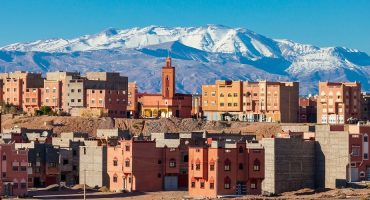3 months ago we invited you to spend a week volunteering in Africa to get to know the countries, the people and help the non-profit organization Worldreader bring e-readers and e-books to students.
We asked you to make and submit a short video and tell us why you’d like to go. The winner of the competition was Sara, a teacher from North Carolina, US, who integrates technology into her and her students’ everyday activities and encourages both her students and other teachers to use e-readers and generally read more. (Here’s Sara’s original video submission)
Kenya is a country in East Africa. Nearly 70% of the country’s 39 million population is employed by the agricultural sector. 73% of Kenyans are under 30 years old.
Most Kenyans are bilingual in English and Swahili and a large percentage also speak the mother tongue of their ethnic tribe.
As you can imagine, books are not as easily available there as in your town. But that shouldn’t stop people from learning.
Sara went to Kenya, talked to teachers about the use of technology in the classroom, helped Worldreader share the e-readers they had with them and saw some baby elephants and giraffes on the way. Watch the short video about her trip to Kenya and read on for an interview with her about the experience.
eDreams: What did you expect to find in Kenya? What were your thoughts about your trip the night before your flight?
Sara: “I’m not sure I had any preconceived notions about Kenya and my thoughts before the trip… I wondered if this was a real contest and would there really be someone to meet me in Nairobi after 32 hours of traveling. And I was excited to meet people who have such cool jobs promoting literature all over the world.”
Was it your first time in Kenya? What about Africa?
“This was my first time in Kenya, Africa and ever travelling alone! I can only recall even travelling out of state by myself one other time.”
What’s the first thing that comes to your mind when you think about Kenya?
“The beauty of the landscape and the excitement of the teachers getting to choose their own books for the first time. I was amazed to see giraffes and zebras on the side of the road as we drove through the Rift Valley and the physical landscape was so striking. And I will never forget how excited the teachers were sharing all the books they downloaded to the e-readers.”
I saw the videos, it’s incredible how the animals just cross the street and walk around freely. They’re free aren’t they? Or are there reservations?
“We were in the Nairobi national reserve for most of these videos, but we also saw animals just along the highway on the way to Kilgoris.”
Did you have any “adventures” while there? An over-friendly animal or weird food you ate but didn’t feel keen on trying in the first place?
“The food was fantastic, whether prepared over an open fire at Ntimigom school by two fabulous ladies or in a first rate hotel in Nairobi. I was surprised that I did not find anything I didn’t like to eat. I even learned to like mangos in Kilgoris.”
“The key is getting students everywhere to love relating to literature, be it fiction, non-fiction, or travel magazines 🙂 not just “reading””
Are kids in Kenya living a different childhood to kids in other parts of the world?
“I have enjoyed sharing culture from the school in Kenya with students in Davie County. Everywhere I have travelled and watched children play they use sticks and rocks to represent their own environments, laying out elaborate or simple houses or villages. I have a great photo of the children’s rock village on the hill at Ntimigom.”
“I also have two photos of individual houses. One is a typical rectangular house with the rooms clearly marked. The US students easily identify with this type of home. In the other individual house photo the home is round, reflecting the two main styles of houses we saw throughout Kenya. It has been a great tool to show to talk about cultural differences through pretend play that all students recognise.”
So what you’re saying is “kids are kids” no matter where they live?
“Pretty much, and that it is important for kids to understand that cultural differences are not good or bad, just differences.”
“If you love reading then you understand that your story is just as important as my story and we become valuable to one another despite our differences.”
How important is it for a child to read?
“The key is getting students everywhere to love relating to literature, be it fiction, non-fiction, or travel magazines 🙂 not just “reading”. Learning to love stories early in life is critical to becoming a lifelong learner. Our personal stories all overlap. If you love reading then you understand that your story is just as important as my story and we become valuable to one another despite our differences.”
What do you think? Will e-readers change how these kids see the world?



